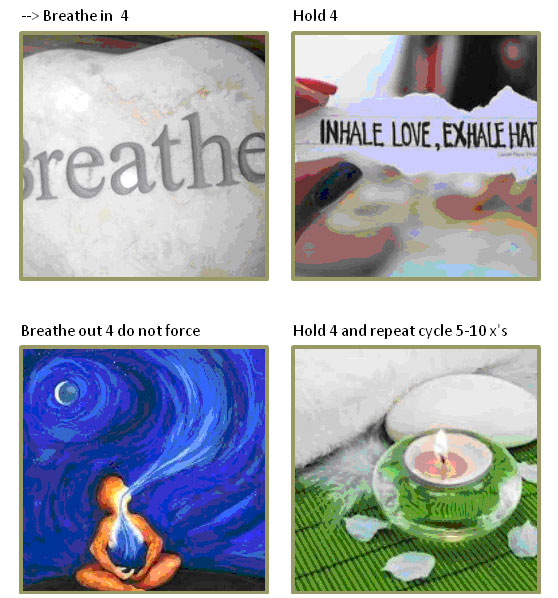Anxiety is our body’s way of getting our attention
- Name it: Anxiety?
“Just a little bit nervous” she said, holding about an inch of space between her thumb and index finger. “just not sleeping as well as I used to do. I used to be able to put my head on the pillow and have a great night sleep, but now… it’s not like that anymore. I wish it was. I have trouble concentrating, and sometimes can’t seem to control my anger. Every once in a while I find myself drinking a little more than I want, just so I can get a few hours of sleep without my thoughts racing around like little hamsters in a cage.”
Anxious symptoms can range from a little bit jumpy to unaccountable feelings of panic or terror. Sometimes there are good reasons to feel anxious – getting ready for a wedding, or preparing for an exam, or being chased by a bear. But if the symptoms last for too long and extend and interfere into other areas of your life, your good stress may now have a new name and can become a problem.
Many American’s struggle with symptoms of anxiety which can take 5-7 years to diagnose and treat, for they often can sneak up and manifest in headaches, stomach and gastrointestinal, TMJ and other physical symptoms. Often too substance abuse or addiction problems arise for by surprise when the methods used to just try and, cope with day to day living at a fast and sometimes overwhelming pace. The problems can arise when the solution itself no longer is a solution, but a problem itself.
Claim it:
Admit that there are times when the feelings you are having are anxious feelings. These can be: racing heart, pressure in the chest, agitated movements, trouble breathing and more. Try accept the feelings you are having, (see below under “Change it” ). Remember:. “what you resist persists”
If you think, “I can’t be anxious – my mother (father, brother, other) were always the anxious ones. I was the one everyone always came to. I’m the person who has always been the rock. How can this be happening to me?” you may be denying the reality of your current circumstances.
Too much stress, for too long, can lead to a phenomenon of an empty emotional gas tank.
Understanding that anxiety is “not just in your head” can help. When one experiences anxious symptoms they may have a sensation that their life is at imminent risk. even when it is not. The message of perceived risk is sent to the brain and adrenaline is then dumped into the nervous system (fight, flight or freeze) to support it taking measures of survival
Change it:
Anxiety is your body’s way of getting your attention. – Take a minute to turn off the phone, computer, music – and listen to what your body needs. Treat yourself like a beloved pet. Listen to your needs and make the time to meet them.
Get good sleep and exercise. Know your sleep and exercise needs
Drink enough water. In San Diego, we live in a semi-desert environment and need to stay hydrated. I have spoken to many people who have experienced panic attacks because of too little water, food or rest. Take care of your body and it will take care of you.
Build a strong support system. If family isn’t close find one of many excellent support groups in the community.
Drink caffeine early in the day and in moderation and monitor the quantity
Be aware of the impact of recreational substances. Something that chemically relaxes you (like alcohol), is a depressant, and depressants and depression can increase anxious feelings.
Increase your exercise – cross training can help
Make a gratitude list
Breathe. Here is a simple breathing technique I have been teaching to my clients for several years, it is called “4 part breathing”. Clients consistently report a decrease in anxious symptoms, including panic.
Draw a square, it should be the same size on each side and top:

Other resources to help you if anxiety is interfering in your daily sense of well-being:
Insight Timer APP has a playlist of guided meditations
BREATHE2RELAX APP, helps manage breathing to cope with anxious feelings and reduce the risk of hyperventilation. If you hyperventilate, carry brown bags with you to blow into.
www.ADAA.org, Anxiety and Depression Association of America (Anxiety and Depression are often linked)
Multiple videos on YouTube by leaders in Anxiety treatment:
Steven Hayes teaches on managing anxiety with meditation and Acceptance and Commitment Therapy
Meditation is being proven to help with anxiety. Meditation is not affiliated with any religion.
Try tapping (a form of EMDR): www.tapping.com has video instructions, this is a simple physical technique coupled with re-writing mental messages
Watch funny movies with friends
Go for a walk or run on the beach
Play with a kitten, puppy or baby
Make a gift for someone special
Journal or draw
Lovemaking
Volunteer
Take a class
Make a list of the things you like to do that make you feel good, and then start doing them
Most important, talk to your doctor and make sure that there is not a physical cause for your anxious feelings.
Laara Israhel, LMFT is a licensed clinician and works with individuals, couples and families. She is a faith and mindfulness based practitioner working to help find balance between the body and the mind.